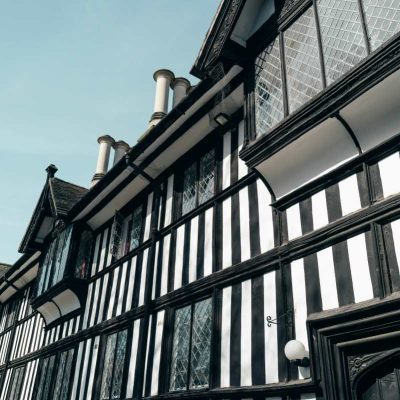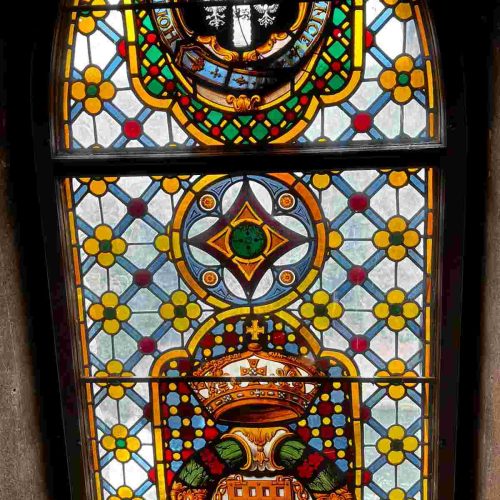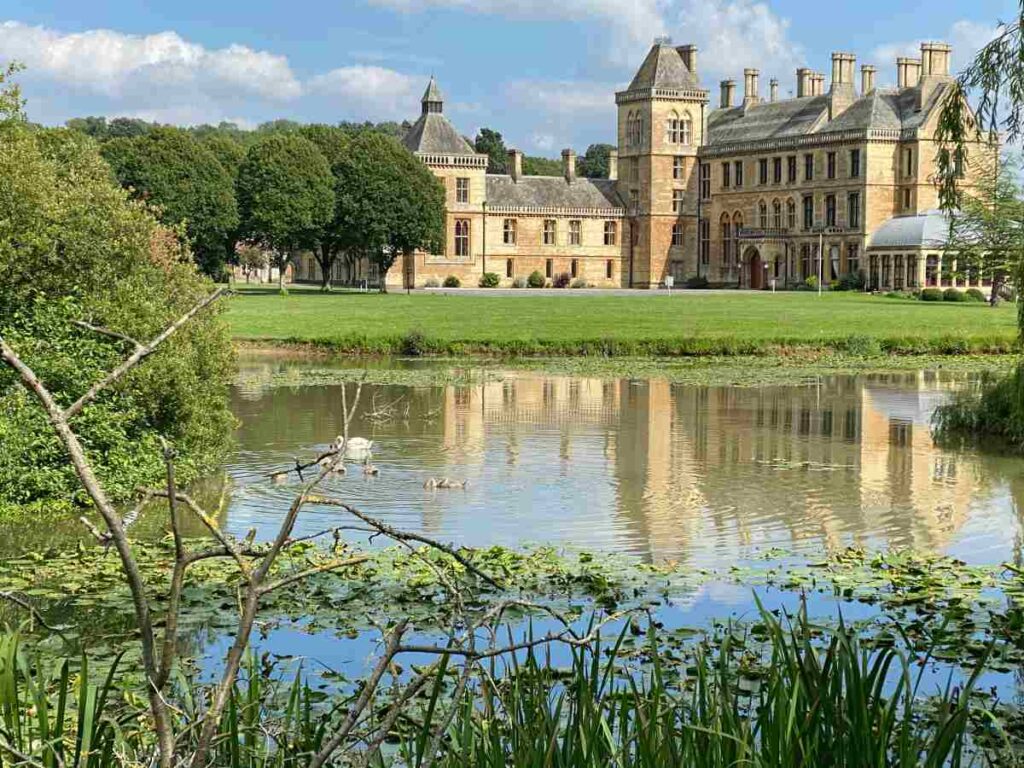


Walking the streets of Warwickshire, you feel transported back through the centuries. The honey-coloured Cotswold stone of Jacobean manors, the soaring spires of medieval churches, and the elegant Georgian townhouses all echo generations past. This is a place where history permeates the very air. Yet the ravages of time and the pressures of modern life threaten these architectural treasures. We must preserve them. In this article, you’ll explore ongoing efforts to conserve Warwickshire’s built heritage and discover how you can help protect the echoes of the past.
Warwickshire has a wealth of medieval architecture, including some of the finest castles in England. Warwick Castle, built in the 11th century, is considered “Britain’s greatest medieval experience”. Kenilworth Castle, constructed in the 12th century, was once the largest castle in England.
Many towns in Warwickshire feature timber-framed houses from the 15th to 17th centuries. Notable examples include Shakespeare’s Birthplace, the Harvard House, and the Guildhall in Stratford-upon-Avon. Timber framing was typical in this era due to the abundance of oak forests in the region. These historic structures demonstrate intricate designs and craftsmanship.
Several stately homes in Warwickshire provide glimpses into the lives of the aristocracy from the 16th to 19th centuries. Charlecote Park, a grand Elizabethan house, has been the seat of the Lucy family for centuries. Ragley Hall, built in the 17th century, boasts beautiful landscaped gardens. Packwood House features a notable collection of 16th-century tapestries, furniture, and other decorative arts.

Warwickshire contains many fine churches, some dating to the Anglo-Saxon era. St. Mary the Virgin Church in Wootton Wawen features Anglo-Saxon stonework. The Church of St. John the Baptist in Aston Cantlow incorporates 12th-century elements. St. Peter’s Church in Wolfhampcote is a well-preserved example of Norman architecture. These historic churches demonstrate the development of ecclesiastical architecture in England over centuries.
Through its wealth of medieval castles, timber-framed buildings, stately homes, and churches, Warwickshire offers an architectural legacy spanning over 1,000 years of English history. Preserving these past echoes allows residents and visitors to understand the county’s rich heritage.
Many historic buildings require extensive and expensive renovations and restorations to preserve them for future generations. However, the lack of government funding and private donations pose severe challenges. Local authorities struggle to allocate adequate budgets, while many privately owned listed buildings remain in disrepair due to owners’ inability to finance necessary works. Increased funding schemes and incentives are desperately needed to protect Warwickshire’s architectural heritage.
Some building owners make inappropriate alterations and extensions to historic buildings without proper planning consent. These insensitive changes can permanently damage the architectural significance and integrity of the structure. Strict enforcement of planning legislation and conservation area policies is necessary to prevent undesirable modifications.
Exposure to harsh weather conditions, pollution, and other environmental factors threatens historic buildings. Driving wind and rain accelerates the decay of building materials, while pollution eats into facades and deteriorates stonework details. Regular maintenance and repairs are required to mitigate the damaging impacts of environmental factors on Warwickshire’s historic architecture.
Warwickshire’s wealth of historic buildings can be preserved by addressing these key threats through increased funding and stricter regulation. With support from government bodies and community stakeholders, the county’s architectural legacy will remain an echo of the past for centuries ahead.
Conservationists have made commendable progress in preserving Warwickshire’s architectural treasures. Their efforts ensure these historic structures remain intact for future generations.
Many medieval homes in Warwickshire feature timber frames, where wooden beams support the walls. As wood deteriorates over time, conservationists have prioritised preserving these frames. Methods include replacing rotten wood, treating frames with protective chemicals, and controlling humidity. For example, the Shakespeare Birthplace Trust repaired and treated the timber frame of Shakespeare’s birthplace in Stratford-upon-Avon.

Stained glass windows are prominent in Warwickshire churches, like those in St. Mary’s Church in Warwick and Holy Trinity Church in Stratford-upon-Avon. Sun exposure and pollution can damage these windows, so restorers carefully remove, clean, and repair stained glass pieces. They re-lead and re-cement the glass before re-installing the windows. These efforts revive the window’s original beauty and ensure their longevity.
Many historic buildings in Warwickshire incorporate local sandstone, limestone and other sedimentary rocks. Exposure causes these stones to deteriorate and erode over time. Conservationists have developed techniques to clean, re-point, and strengthen stonework. For instance, a restoration of Warwick Castle in the late 20th century involved cleaning the castle walls, re-pointing mortar, and replacing severely damaged stones. These interventions have allowed the castle to stand for centuries more.
In summary, timber frame preservation, stained glass restoration, and stonework conservation have been instrumental in protecting Warwickshire’s architectural legacy. Vigilant maintenance and repair of these buildings honour their historical significance and allow future generations to experience their grandeur. Continued support of preservation efforts will ensure these echoes of the past reverberate long into the future.
Warwickshire’s architectural legacy is an integral part of its identity and history. Preserving its built heritage is crucial to safeguarding the country’s culture for future generations.
Many of Warwickshire’s buildings date back centuries and are fine examples of historical architectural styles. Structures like Warwick Castle, a medieval castle built in 1068, offer a glimpse into the region’s distant past. Preserving and restoring such buildings maintains their historical significance and protects them from decay.
Warwickshire’s historic architecture attracts tourists from around the world. Iconic landmarks like Warwick Castle attract over 300,000 visitors annually, demonstrating their enduring appeal and contribution to the local economy. Preserving architectural gems promotes tourism by highlighting the area’s unique character.
Warwickshire’s architectural legacy gives its communities a strong sense of shared identity and pride in their local history. Protecting historic buildings allows residents to continue appreciating and passing on their cultural heritage to future generations. Community support is vital to securing the long-term preservation of the county’s architectural treasures.
Warwickshire’s built heritage includes many fine examples of architectural styles like Gothic Revival and Arts and Crafts. Preserving such buildings provides a wellspring of inspiration for contemporary architects and designers. Protecting architectural landmarks, fosters continued innovation in design by allowing their timeless beauty and styles to endure.

Warwickshire’s architectural legacy is central to its cultural heritage, economy, and communities. Preserving its historic buildings protects its identity, promotes tourism, fosters civic pride, and inspires new design. Safeguarding Warwickshire’s built heritage ensures its architectural treasures endure for centuries.
There are many ways for individuals to volunteer their time and skills for architectural conservation efforts. Tasks like conducting building surveys, assisting with fundraising campaigns, helping with education and outreach programs, and participating in restoration work are all valuable ways to volunteer. Local civic organisations, preservation societies, and national charities often seek volunteer support. Donating your specialised skills in areas like carpentry, masonry, or historical research can be a beneficial form of volunteer work.
Joining a local or national architectural preservation organisation is an easy way to provide support. Membership dues provide crucial funding for conservation campaigns and advocacy work. As a member, you will also stay updated on preservation news in your area and find out about opportunities to become more actively involved. Some of the largest preservation organisations in the UK include the Victorian Society, the Twentieth Century Society, and the Council for British Archaeology.
Elected officials and local government representatives need to hear from citizens about issues that matter to them, like architectural conservation. Calling on your MP, councillors or other government representatives to pledge their support for preservation policies, legislation, and funding is a critical way to drive change. Be prepared to offer specific examples of at-risk historic buildings or areas in your local community that would benefit from increased protection or investment. Putting preservation on the political agenda can have significant and long-lasting impacts.
Financial contributions are essential for funding the work of architectural preservation. Donating to national charities like the Architectural Heritage Fund, the Heritage Alliance, and regional building preservation trusts is an easy way to provide direct support. These organisations rely on donations to launch fundraising campaigns, provide restoration grants, and advocate for threatened historic buildings. Any amount can make a difference in helping to save Britain’s architectural heritage.
So, as you explore the architectural heritage of Warwickshire, remember that these historic structures and landscapes embody the spirit of generations past. Their preservation allows us to walk in the footsteps of history, connecting viscerally with those who came before. Support heritage conservation efforts in your community, advocate for adaptive reuse of old buildings, and visit historic sites. The echoes of the past reverberate powerfully still if we pause to listen. When we engage actively with our built heritage, we ensure that the voices of history continue to enlighten, inspire and educate long into the future.
Cast-iron rainwater goods are essential for renovating and preserving historic and listed buildings, offering an authentic look and long-lasting durability that is especially beneficial for ecclesiastical structures. Their genuine appearance and robust materiality guarantee perfect integration with traditional architecture, upholding these critical edifices’ visual and structural integrity.
Tuscan Foundry is one of the UK’s leading suppliers of cast iron rainwater systems. Tuscan Foundry has been instrumental in delivering custom castings and specialised radius and curved guttering solutions for conserving buildings in Warwickshire and the surrounding counties. We work in close partnerships with organisations dedicated to preserving churches and listed buildings.
Tuscan Foundry specialises in providing bespoke, superior-quality cast iron products that adhere to the rigorous criteria of historical preservation. We boast an extensive collection of cast iron hopper heads tailored for listed, period and religious structures, offering customised patterns and castings tailored to the specific needs of your project.
For projects requiring greater detail and complexity, we offer on-site surveys and consultations for cast iron guttering and drainage solutions (these services are chargeable; inquiries are welcome). Our profound knowledge and expertise ensure that the restoration efforts will honour the legacy of Warwickshire’s architectural history and enable it to withstand the ravages of time.